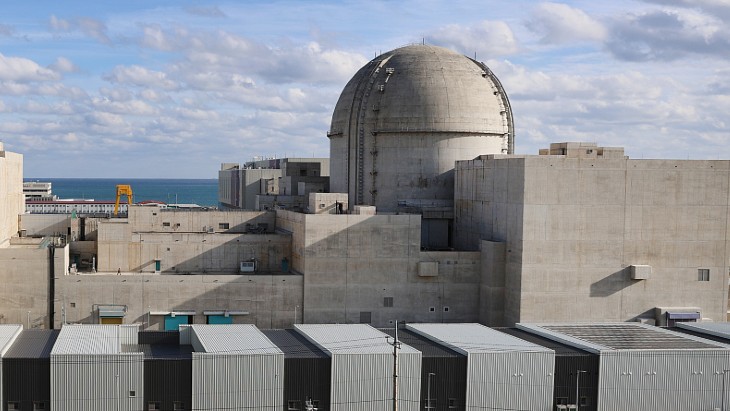The No.1 reactor achieved first criticality at 9.35am on 12 September, China Huaneng announced. It noted this milestone was reached 23 days after the start of fuel loading.
The company said the demonstration project will now conduct zero-power physical tests to verify the core and control rod performance and the availability of nuclear instrument monitoring system equipment. China Huaneng added it will "continue to standardise the follow-up commissioning and trial operation of the demonstration project to ensure the first grid-connected power generation in 2021."
Construction of the demonstration HTR-PM plant - which features two small reactors that will drive a single 210 MWe turbine - began in December 2012. China Huaneng is the lead organisation in the consortium to build the demonstration units (with a 47.5% stake), together with China National Nuclear Corporation subsidiary China Nuclear Engineering Corporation (CNEC) (32.5%) and Tsinghua University's Institute of Nuclear and New Energy Technology (20%), which is the research and development leader. Chinergy, a joint venture of Tsinghua and CNEC, is the main contractor for the nuclear island.
China Huaneng noted the localisation rate of HTR-PM equipment reached a level of 93.4%. It noted that as the world's first pebble-bed modular high-temperature gas-cooled reactor, the demonstration project used more than 2000 sets of equipment for the first time, and more than 600 sets of innovative equipment, including the world's first high-temperature gas-cooled reactor spiral coil once-through steam generator. It also features the first high-power, high-temperature thermal electromagnetic bearing structure for the main helium fan, as well as the world's largest and heaviest reactor pressure vessel.
Cold functional tests - which aim to verify the reactor's primary loop system and equipment as well as the strength and tightness of its auxiliary pipelines under pressure higher than the design pressure - were completed at the HTR-PM's two reactors on 19 October and 3 November last year, respectively. Hot functional tests, which simulate the temperatures and pressures which the reactor systems will be subjected to during normal operation, started in January.
China's nuclear regulator, the National Nuclear Safety Administration, issued an operating licence for the HTR-PM on 20 August. The loading of the first spherical fuel elements into the first reactor started the following day.
The HTR-PM has the advantages of inherent safety, a high equipment localisation rate, modular design and adaptation to small and medium-sized power grids. It also has broad range of potential commercial applications, including power generation, cogeneration of heat and power, and high-temperature process heat applications.
A further 18 such HTR-PM units are proposed for the Shidaowan site. Beyond HTR-PM, China proposes a scaled-up version called HTR-PM600, which sees one large turbine rated at 650 MWe driven by some six HTR-PM reactor units. Feasibility studies on HTR-PM600 deployment are under way for Sanmen, Zhejiang province; Ruijin, Jiangxi province; Xiapu and Wan'an, in Fujian province; and Bai'an, Guangdong province.

.jpg)



_30199.jpg)
_72306.jpg)







